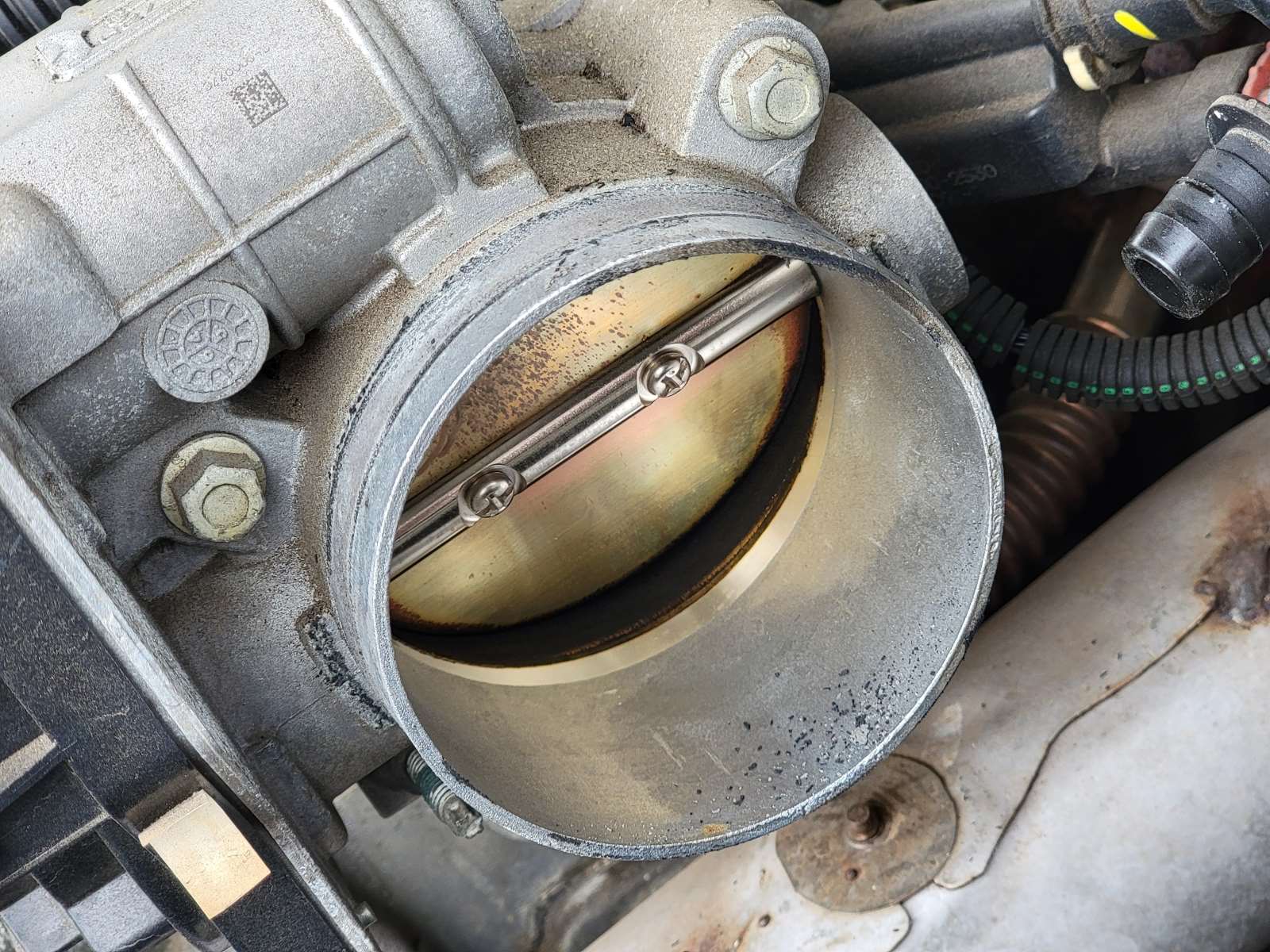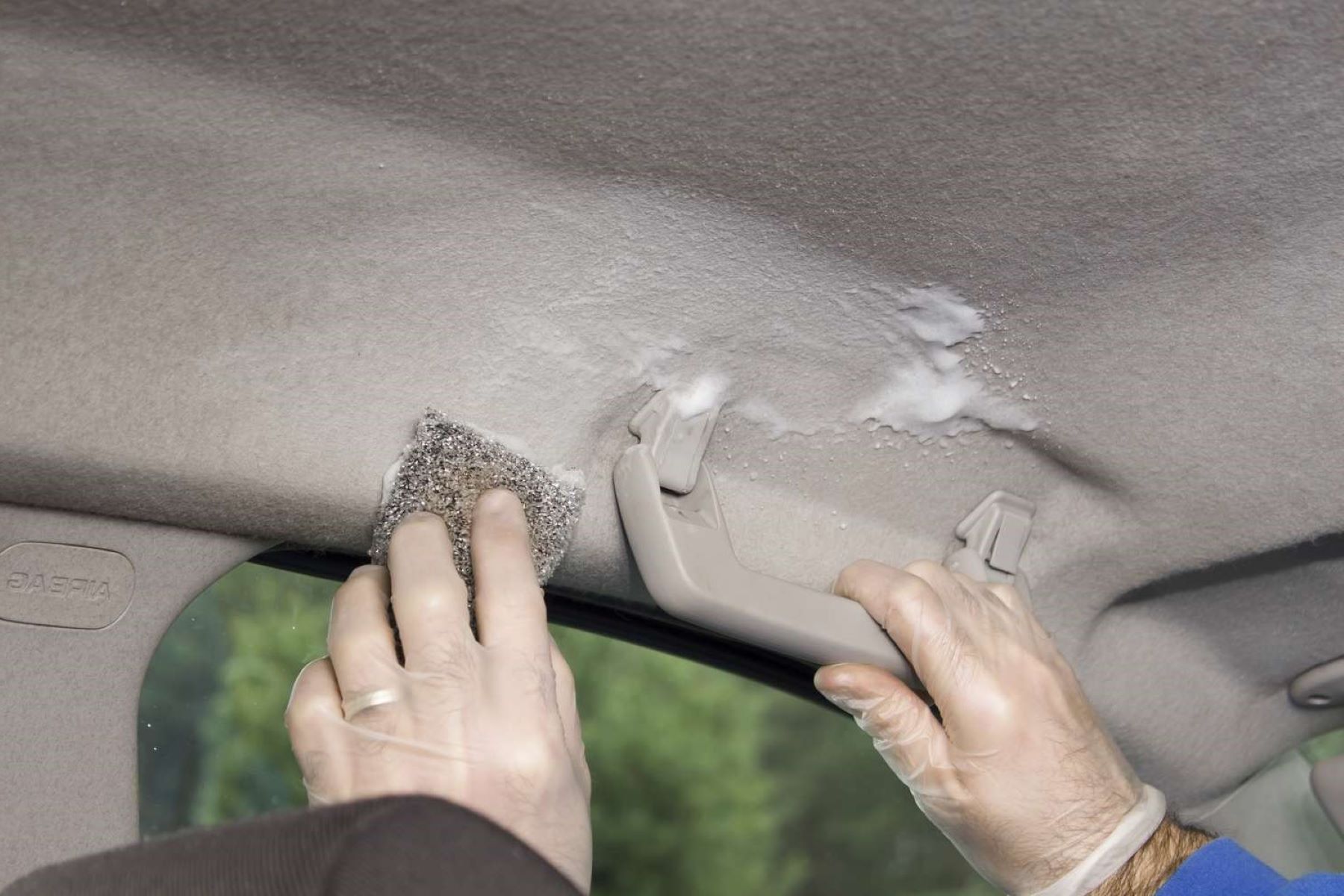Home>Automotive>The Surprising Side Effects Of Cleaning Your Car’s Throttle Body


Automotive
The Surprising Side Effects Of Cleaning Your Car’s Throttle Body
Published: January 18, 2024
Discover the unexpected effects of cleaning your car's throttle body. Learn how this automotive maintenance task can improve performance and fuel efficiency.
(Many of the links in this article redirect to a specific reviewed product. Your purchase of these products through affiliate links helps to generate commission for Regretless.com, at no extra cost. Learn more)
Table of Contents
Introduction
Cleaning your car's throttle body may not be the first thing that comes to mind when you think about vehicle maintenance, but it's a task that can have surprising benefits. The throttle body is a critical component of your car's engine, playing a pivotal role in regulating the air intake and fuel delivery. Over time, carbon deposits and dirt can accumulate inside the throttle body, leading to a host of issues that can affect your car's performance and fuel efficiency.
Regular maintenance of the throttle body is often overlooked, yet it can yield remarkable results in terms of your car's overall performance. In this article, we'll delve into the often overlooked practice of cleaning your car's throttle body. We'll explore why it's important, the unexpected benefits it can bring, and how you can carry out this simple yet impactful maintenance task yourself.
So, buckle up and get ready to discover the surprising side effects of cleaning your car's throttle body. This often neglected maintenance task might just be the key to unlocking hidden performance and efficiency in your vehicle.
What is the throttle body?
The throttle body is a fundamental component of a car's engine, serving as the gateway through which air enters the engine. It is a crucial part of the air intake system, responsible for regulating the amount of air that flows into the engine. This regulation is vital for maintaining the proper air-fuel mixture required for combustion.
The throttle body is typically located between the air filter and the intake manifold. It consists of a butterfly valve that opens and closes in response to the driver's input via the accelerator pedal. When the driver presses the accelerator, the throttle body opens to allow more air into the engine, enabling increased power output. Conversely, releasing the accelerator causes the throttle body to close, reducing the airflow and slowing the vehicle down.
Modern vehicles are equipped with electronic throttle bodies that are controlled by the car's engine control unit (ECU). This electronic throttle control (ETC) system has replaced traditional mechanical linkages, offering precise control over the throttle opening and improving fuel efficiency.
The throttle body plays a crucial role in the overall performance and efficiency of the engine. Any issues with the throttle body, such as carbon buildup or dirt accumulation, can disrupt the airflow and lead to a range of problems, including rough idling, stalling, reduced power, and decreased fuel economy.
Understanding the function of the throttle body is essential for recognizing its significance in maintaining the optimal operation of the engine. Regular inspection and cleaning of the throttle body can prevent performance issues and ensure that the engine operates at its best. By keeping the throttle body clean and free from obstructions, you can help your car perform efficiently and smoothly, ultimately contributing to a more enjoyable driving experience.
Why clean your car's throttle body?
Cleaning your car's throttle body is a crucial yet often overlooked aspect of vehicle maintenance. Over time, carbon deposits, dirt, and oil residue can accumulate inside the throttle body, leading to a range of performance issues. These deposits can hinder the smooth flow of air into the engine, disrupting the delicate balance of the air-fuel mixture required for combustion. As a result, the engine may experience rough idling, stalling, and reduced power output. In addition, a dirty throttle body can contribute to decreased fuel efficiency, impacting the overall cost of operating the vehicle.
One of the primary reasons to clean your car's throttle body is to ensure optimal engine performance. A clean throttle body promotes smooth airflow into the engine, allowing for precise regulation of the air-fuel mixture. This, in turn, facilitates efficient combustion and power generation. By maintaining a clean throttle body, you can help prevent issues such as rough idling and stalling, ensuring that your engine operates smoothly and consistently.
Furthermore, cleaning the throttle body can have a positive impact on fuel efficiency. When carbon deposits and dirt accumulate inside the throttle body, they can disrupt the airflow, leading to an imbalanced air-fuel mixture. This imbalance can result in inefficient combustion, causing the engine to consume more fuel than necessary. By cleaning the throttle body and removing these deposits, you can restore the proper airflow and promote efficient fuel combustion, ultimately improving fuel economy.
Another compelling reason to clean your car's throttle body is to prevent potential damage to other engine components. A dirty throttle body can lead to increased strain on other parts of the engine, such as the idle air control valve and the mass airflow sensor. These components work in conjunction with the throttle body to regulate airflow and ensure smooth engine operation. When the throttle body is dirty, these additional components may experience added stress, potentially leading to premature wear and malfunction.
In summary, cleaning your car's throttle body is essential for maintaining optimal engine performance, promoting fuel efficiency, and preventing potential damage to other engine components. By incorporating throttle body cleaning into your regular maintenance routine, you can help ensure that your vehicle operates at its best, delivering reliable performance and cost-effective fuel consumption.
The surprising side effects of cleaning your car's throttle body
Cleaning your car's throttle body can yield a range of surprising side effects that extend beyond the immediate improvements in engine performance. While the primary goal of throttle body cleaning is to ensure smooth airflow and optimal fuel combustion, the benefits can have a ripple effect throughout various aspects of your vehicle's operation. Let's delve into the unexpected advantages that come with this often overlooked maintenance task.
1. Enhanced Engine Response
One of the most noticeable side effects of cleaning your car's throttle body is the enhanced engine response. As carbon deposits and dirt accumulate inside the throttle body, the smooth flow of air into the engine can be disrupted, leading to sluggish acceleration and delayed throttle response. However, by removing these obstructions through cleaning, you can restore the efficient airflow, resulting in improved throttle response and more immediate power delivery. This can make your driving experience more engaging and responsive, especially during acceleration and overtaking maneuvers.
Read more: How To Use A Double Sided Mirror Effectively
2. Smoother Idling and Reduced Stalling
A dirty throttle body can contribute to rough idling and occasional stalling, particularly when the engine is at a standstill. Cleaning the throttle body can address these issues by ensuring that the airflow remains consistent and uninterrupted, even at idle. This can result in a noticeable reduction in engine vibration and a more stable idle speed. Additionally, the risk of stalling, especially during sudden stops or low-speed maneuvers, can be mitigated, providing a more seamless and reliable driving experience.
3. Improved Fuel Economy
Surprisingly, cleaning your car's throttle body can lead to improved fuel economy. When carbon deposits and dirt obstruct the airflow, the engine may compensate by consuming more fuel to maintain the air-fuel mixture required for combustion. By cleaning the throttle body and restoring the smooth airflow, you can promote more efficient fuel combustion, ultimately leading to better mileage and reduced fuel consumption. This can translate to long-term cost savings and a reduced environmental impact.
4. Extended Longevity of Engine Components
The benefits of throttle body cleaning extend beyond immediate performance improvements. By maintaining a clean throttle body, you can reduce the strain on other critical engine components, such as the idle air control valve and the mass airflow sensor. These components work in tandem with the throttle body to regulate airflow and ensure smooth engine operation. A clean throttle body can help preserve the longevity of these components, reducing the risk of premature wear and potential malfunctions. This, in turn, contributes to the overall reliability and durability of your vehicle's engine system.
In essence, the surprising side effects of cleaning your car's throttle body encompass a spectrum of benefits that go beyond mere engine cleanliness. From enhanced engine response and smoother idling to improved fuel economy and extended component longevity, throttle body cleaning can have a transformative impact on your vehicle's overall performance and reliability. By incorporating this simple maintenance task into your regular routine, you can unlock these unexpected benefits and enjoy a more satisfying and efficient driving experience.
How to clean your car's throttle body
Cleaning your car's throttle body is a relatively straightforward maintenance task that can be performed with basic tools and a systematic approach. Before you begin, it's essential to gather the necessary materials, including a can of throttle body cleaner, a clean cloth, a screwdriver or socket set, and a pair of gloves and safety goggles for personal protection. Once you have the required items, you can proceed with the following steps to clean your car's throttle body effectively:
-
Locate the Throttle Body: The throttle body is typically located between the air intake hose and the intake manifold. It is connected to the air intake system and is easily identifiable by the presence of a butterfly valve inside. Before starting the cleaning process, ensure that the engine is turned off and has cooled down to prevent accidental burns.
-
Disconnect the Air Intake Hose: Use a screwdriver or socket set to loosen the clamps securing the air intake hose to the throttle body. Once the clamps are loosened, carefully detach the air intake hose from the throttle body, allowing access to the interior for cleaning.
-
Inspect the Interior: With the air intake hose removed, visually inspect the interior of the throttle body. Look for signs of carbon buildup, dirt, or oil residue. Using a flashlight, you can get a clearer view of the throttle body's condition and identify areas that require cleaning.
-
Clean the Throttle Body: With the throttle body interior exposed, use the throttle body cleaner to spray the interior surfaces thoroughly. The cleaner is designed to dissolve and remove carbon deposits and dirt, restoring the smooth airflow. Be cautious not to overspray or allow the cleaner to come into contact with electrical components or sensors.
-
Wipe and Reassemble: After spraying the throttle body cleaner, use a clean cloth to wipe away the dissolved deposits and dirt. Ensure that the interior surfaces are thoroughly cleaned and free from residue. Once cleaned, reattach the air intake hose to the throttle body and secure it with the clamps.
-
Start the Engine: With the cleaning process completed and the air intake hose reconnected, start the engine to ensure that the throttle body functions smoothly. Allow the engine to run for a few minutes to ensure that the throttle response is consistent and that there are no abnormal idling issues.
-
Test Drive: Take your vehicle for a brief test drive to assess the impact of the throttle body cleaning. Pay attention to the engine response, acceleration, and overall smoothness of operation. You may notice improved throttle response and a more refined driving experience.
By following these steps, you can effectively clean your car's throttle body and restore optimal airflow into the engine. This simple maintenance task can have a significant impact on your vehicle's performance and fuel efficiency, making it a valuable addition to your regular maintenance routine.
Read more: Shocking Side Effects Of Pamprin Revealed!
Conclusion
In conclusion, the often overlooked practice of cleaning your car's throttle body can yield a multitude of benefits that extend far beyond the immediate improvements in engine performance. By maintaining a clean throttle body, you can experience enhanced engine response, smoother idling, improved fuel economy, and extended longevity of critical engine components. These surprising side effects underscore the significance of incorporating throttle body cleaning into your regular vehicle maintenance routine.
The process of cleaning your car's throttle body is relatively simple and can be carried out with basic tools and a systematic approach. By following the outlined steps, you can effectively remove carbon deposits and dirt, restoring optimal airflow into the engine and promoting efficient fuel combustion. This, in turn, can lead to a more responsive driving experience, reduced risk of stalling, and long-term cost savings through improved fuel economy.
Furthermore, the unexpected benefits of throttle body cleaning highlight the interconnected nature of vehicle maintenance. By addressing a seemingly minor component such as the throttle body, you can positively influence various aspects of your vehicle's operation, ultimately contributing to a more reliable, efficient, and enjoyable driving experience.
In essence, the surprising side effects of cleaning your car's throttle body underscore the importance of proactive maintenance in preserving the performance and longevity of your vehicle. By recognizing the impact of this often overlooked task, you can empower yourself to take a more comprehensive approach to vehicle care, ensuring that your car operates at its best for years to come.
So, the next time you embark on your vehicle maintenance journey, remember the often underestimated throttle body and its potential to unlock a host of benefits. By embracing this simple yet impactful practice, you can elevate your driving experience and promote the long-term health of your vehicle's engine. It's time to harness the power of throttle body cleaning and embrace the surprising side effects that await.













